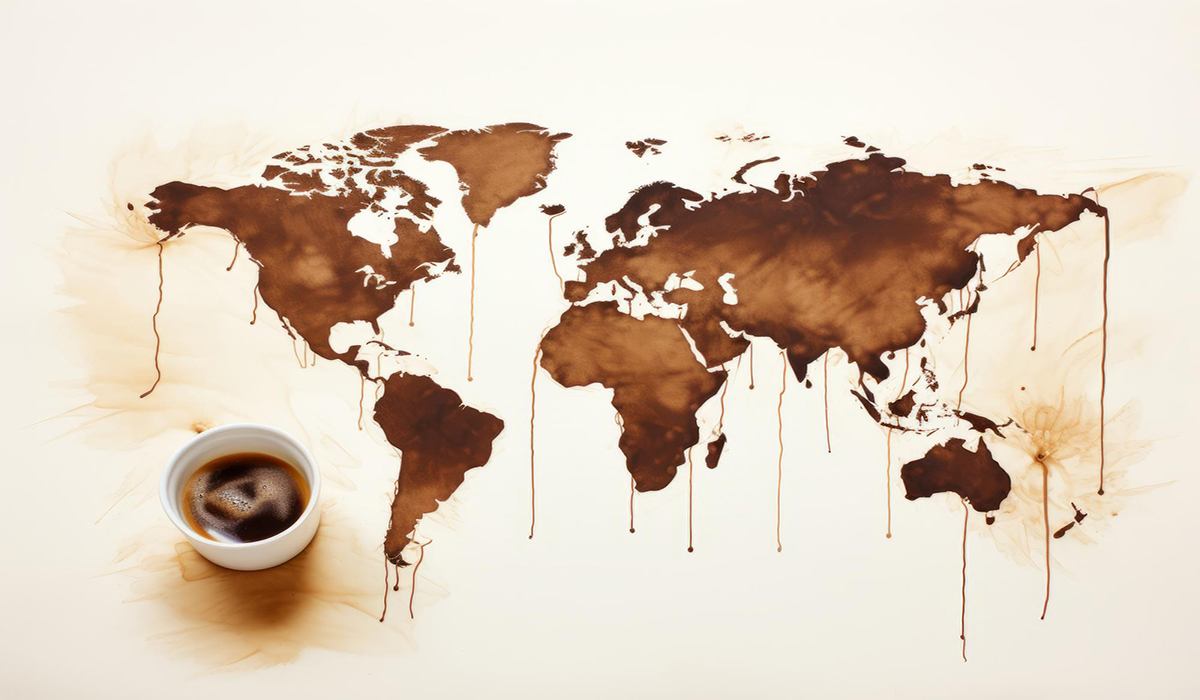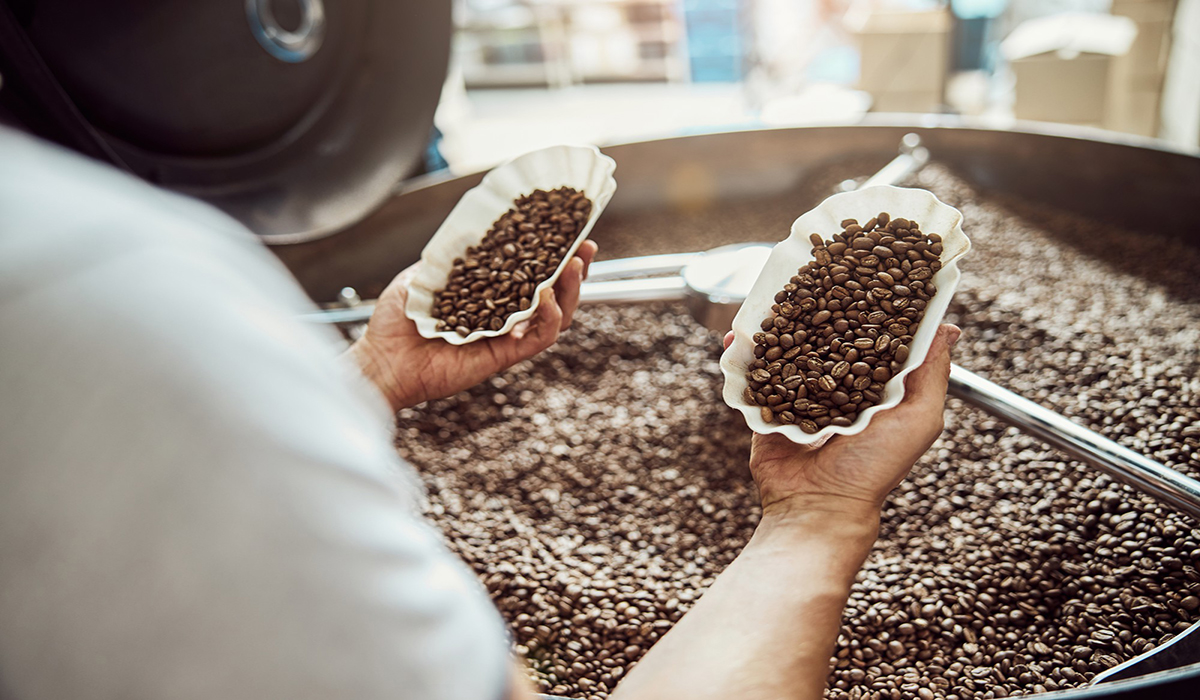How Did Coffee Become One of the Most Consumed Beverages in the World?

Coffee is the second most traded commodity in the world after oil. This strategic crop, with millions of cups consumed daily across the globe, has traveled a long journey — from the highlands of Ethiopia to today’s modern coffee cups. The fascinating story of these magical beans weaves together the history, culture, and global economy.
The Discovery and Expansion of Coffee Consumption
The origins of coffee trace back to the 8th century in the Kaffa region of Ethiopia. According to legend, a goatherd named Kaldi noticed that his goats became unusually energetic after eating red and green berries from a certain tree. Curious, he tried the berries himself and experienced a surge of vitality and alertness.
Local monks, intrigued by the effects, began brewing the beans into a drink to help them stay awake during evening prayers. Over time, expansion of coffee consumption spread across other parts of Africa and eventually reached the Middle East and Europe. As the Portuguese began cultivating coffee in Brazil and the Spanish introduced it to Latin American countries, these regions soon became major hubs for green coffee trade. By the 18th century, coffee had firmly established itself in both European and American cultures, where its popularity continued to grow rapidly.
The Rise of Coffee as a Popular Beverage in Iran and Around the World
Coffee is the second most consumed beverage in the world after tea. According to global statistics, more than 2 billion cups of coffee are consumed every day. The highest per capita coffee consumption is recorded in Scandinavian countries, with Finland leading at 12 kilograms per person per year, followed by Norway, Iceland, and Denmark.
Globally, beverage consumption habits are shifting. In Asian countries such as China, Japan, and South Korea, the traditional ratio of coffee to tea consumption (1:5) has now reversed to 4:1 in favor of coffee.
This shift in taste is also noticeable in Iran. The per capita coffee consumption in Iran is estimated at approximately 700 grams per person per year, with Tehran, Isfahan, Shiraz, Mashhad, and Rasht among the cities with the highest coffee consumption rates.
Especially among Generation Z, coffee has gained a unique cultural and social significance. The expansion of cafes, specialty coffee shops, and growing public awareness about various brewing methods and coffee types have contributed to this trend.
The rise in expansion of coffee consumption has been further supported by the proliferation of modern coffee shops and barista competitions, where most participants are under the age of 25. This cultural shift goes beyond a simple change in taste—it’s a reflection of a broader lifestyle transformation and evolving social preferences.
Parto Padideh Co., one of Iran’s leading coffee companies, has played a significant role in popularizing quality coffee culture and expansion of coffee consumption by employing state-of-the-art equipment and sourcing premium coffee beans. With the growing popularity of coffee among Iran’s younger generation, the country’s green coffee imports are projected to reach 55,000 tons this year—a 7–8% increase compared to the previous year.
Alongside this rising demand, there has been a notable expansion in commercial supply chains, particularly in the form of Wholesale Coffee Blend in Iran. These offerings aim to meet the needs of cafés, restaurants, and specialty retailers by providing consistent, high-quality coffee in bulk quantities, tailored to local preferences and international standards.
Factors Affecting Coffee Quality, Aroma, and Flavor
Coffee cultivation is limited to a specific geographical area known as the Coffee Belt, located between the Tropic of Cancer and the Tropic of Capricorn. This zone provides optimal growing conditions, including temperatures between 16°C and 30°C, suitable altitude, and a balanced climate.
Several factors influence the quality, aroma, and flavor of coffee, with climate and weather conditions being among the most critical. Robusta beans are typically grown at altitudes of 600–1000 meters, while Arabica beans thrive at 1000–2400 meters above sea level. Other key factors include soil type, rainfall, climatic fluctuations, and even volcanic activity, all of which contribute to the bean’s characteristics.
Additionally, harvest methods and post-harvest processing techniques play vital roles in determining the final quality of the coffee. From farm to cup, every step in the coffee production process influences the taste and experience that coffee lovers around the world enjoy.
Coffee, a Profitable and Influential Industry
With the expansion of coffee consumption, coffee is currently the second largest industry in the world after the oil industry. Related industries and various coffee products such as instant coffee, cake, ice cream, and coffee beverages hold a special place in the global economy. Major companies such as Nestlé and Starbucks are among the giants of the coffee industry worldwide.
It is predicted that this year, Parto Padideh Company, as one of the prominent brands in Iran’s coffee industry, will gain a significant share of the market. Unlike the past, when tea was the dominant beverage in Iran, today coffee has become a popular daily drink, especially among the younger generation.
The record for daily coffee consumption by an individual is more than 80 cups, which is, of course, not recommended. Normally, daily consumption of 3 to 5 cups of coffee is considered appropriate and safe for adults.
Nestlé’s revenue from the Iranian market in 2006 was estimated at 3 billion dollars, indicating the high potential of this industry in Iran.
Conclusion
From its discovery until today, coffee has gone through a turbulent journey and, due to changes in lifestyle and consumer tastes, has become one of the most popular beverages in the world.
Various factors affect the quality and taste of coffee, and adhering to standards and using modern technologies along with experience and expertise can bring the best quality to consumers.
Although coffee consumption in Iran is still lower than the global standard, its growth rate is faster than many other countries. With increasing consumer awareness and the presence of specialized brands like Parto Padideh, the future of the coffee industry in Iran is very promising.



